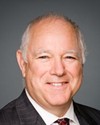Thank you very much, Mr. Chair. Thank you for welcoming me. I would like to greet the members of the Standing Committee on Veterans Affairs.
First of all, I would like to introduce the two persons joining me: Suzanne Tining, Deputy Minister for Veterans Affairs Canada, and James Gilbert, Assistant Deputy Minister for Policy, Communications and Commemoration.
Mr. Chair, I could give a very short speech and say that, at the end of the day, I need billions of dollars for veterans, but you are entitled to know why. That is why I have prepared a speech that will basically focus on two items, including the funding I need to be able to get through the year, more specifically the Supplementary Estimates (C). I am also going to seek the support of the committee members for next year's base budget, the 2012-2013 budget, which will begin on April 1st.
Mr. Chair, I want to state clearly from the very beginning that our government is maintaining benefits to veterans, and we're also making great strides in our efforts to ensure that these brave men and women—some are with us today and this makes this meeting even more meaningful—receive the hassle-free services that they asked for and that they deserve.
My department's priority is to provide services and benefits that are tailored to the needs of veterans and their families, while ensuring that all Canadians remember their achievements and sacrifices. The 2012-2013 main estimates provide Veterans Affairs Canada with nearly $3.6 billion, an increase of $44.8 million, which is 1.3% when compared to the main estimates of last year, which was 2011-2012.
We are doing everything we can to modernize and to upgrade our activities so as to maintain a balance between providing services to veterans and, of course, to modern-day veterans, whether they served in Korea, the Balkans, Bosnia, and Afghanistan, or during World War II.
To this end, we work closely with a variety of veterans groups so that they can help us balance our response and actions, as we address the demographic shift within Canada's veteran community.
A few weeks ago in Winnipeg, I announced the cutting red tape initiative as a way to reduce paperwork. This action plan is going to reduce administrative formalities for veterans, making it possible to provide them with the care they deserve. One of the major features of this announcement is the use of clear and plain language.
As I said during the announcement, much of what is needed to make these improvements simply involves returning to the basics and overhauling how this department works.
With that in mind, we are putting in place updated and more efficient technology to make bureaucratic delays a thing of the past. We are making our programs and policies more relevant, providing greater electronic access to benefits and services, offering professional service from employees who understand the military experience, and creating seamless transition to civilian life from military life, and this is to be done in communicating in plain language.
Last year, Mr. Chair, we processed 41,000 letters, mainly disability benefit applications from veterans. For each of these applications, a letter was written and sent out advising the veteran of a decision. We have heard from the veterans, and we have heard from the Veterans Ombudsman that these letters are too complex, and need to be written in clearer and plainer language.
As you know, we are sending out about 41,000 letters every year in response to veterans' disability claims. Over the past few years, we have made improvements to the way those letters are written, but that is not enough. The ombudsman has asked us to take this a step further.
That is why veterans now receive letters that are clearer and organized based on the following criteria: the veteran's request, the answer, the facts, the evidence we have used, the references and the means available to veterans to proceed forward.
We have heard from the veterans and we have acted upon these recommendations.
These letters are easier to read and understand. We are also making direct contact with the many veterans who have recently received them to ask for their feedback. Better training for employees and better technology will ensure that letters are processed faster and meet the accepted standards of plain language.
We have a new brochure to explain the services and benefits to veterans—and not only to veterans. It provides an overview of the department.
We are modernizing the tools our employees are using to help the veterans. The benefit browser allows employees to quickly access information on the programs and services most relevant to the veterans they are serving. We're rolling out a similar online tool that we expect will be available to veterans once we have made it more user friendly.
Veterans can see a difference. In the past year we have reduced the amount of time it takes to deliver decisions to veterans regarding their disability benefits, a fact reflected by the increased funding requested through the supplementary estimates.
We have improved the response time in our national call centres. And of course, veterans can now take advantage of the direct deposit option to receive their money more quickly.
We have announced a number of other initiatives. Last year's most important initiative was definitely the improvements to the new veterans charter. That is why I am here for the Supplementary Estimates (C). Actually, the call for these new measures is quite strong. We estimate that, over the next five years, 4,000 veterans are going to benefit from these measures. That is an additional $189-million investment. As you know, our department has to let the Treasury Board know what our long-term estimates are. We are roughly talking about a $2-billion investment over the life of the program, meaning the improvements to the new veterans charter.
With these enhancements, we are ensuring that our veterans and Canadian Forces members, especially modern vets, have the right care at the right time for as long as they need it.
In January, Prime Minister Stephen Harper announced funding for the helmets to hardhats program.
Worth noting is that this program was launched jointly with the unions, the provincial government—the Ontario government, in this case—and with resources from the private sector in order to provide veterans with job opportunities in the construction industry.
In this case, TransCanada agreed to put in funds, with the government. So it is a type of public-private partnership for the benefit of veterans. And I have to say that we have had a great response so far with the program.
Approximately 4,000 Canadian Forces members make the transition to civilian life each year. Over the course of their careers, many have developed highly transferable skills as craftsmen, engineers, and welders—just to name a few. Others have administrative, leadership, project management, or planning experience, all skills that could be put to work at one of Canada's 260,000 construction sector firms.
The uptake on the helmets to hardhats program is good, Mr. Speaker, and we are building on this success to make it wider and to reach out to other parts of the country.
At this point I want to thank the members for the work you did on the commemoration report. I've taken note of your recommendations and I will be replying in the near future. Especially as we are to enter the centennial of the First World War, it is key that we get ready for this big meeting.
Actually, in a much shorter window of opportunity, on April 9 we will mark the 95th anniversary of the Battle of Vimy Ridge in Canada and in France. For the second year in a row, over 500 cadets will hold a candlelight ceremony on April 8, and cadets will stand vigil all night at the Tomb of the Unknown Soldier. They will also participate in the national ceremony the following morning.
More than 5,000 Canadians will join veterans, members' organizations, and 100 members of the Canadian Forces in Vimy on Easter Monday for commemoration, and especially to make a transition for young Canadians to learn about the key role Canada played in this battle and learn more about the stories and sacrifices of Canadians in the First World War. So that's quite inspirational.
One thing that is very good, Mr. Speaker—we also need some additional funding as I come to you—is our community war memorial program and cenotaph monument restoration program. Communities throughout the country are asking for funds to rejuvenate, and build new cenotaphs. I'm sure the members around the table have seen projects nearby.
There's good uptake for this program.
Last week, I was in Brighton, Ontario, near the military air base. The government announced a $50,000 contribution for a construction project there.
This monument was inaugurated in 1927 by Sir Arthur Currie and has not been improved, so I think this is more than welcome.
In closing, Mr. Speaker, I just want to reaffirm that I can see that, as parliamentarians, we're all here today to make the lives of our veterans better. That's my very goal as the Minister of Veterans Affairs. I really insist, and I've instructed my officials, that we need to move on with cutting red tape and making our programs easier for veterans to access.
With this, I will be more than happy to take your comments and questions.





